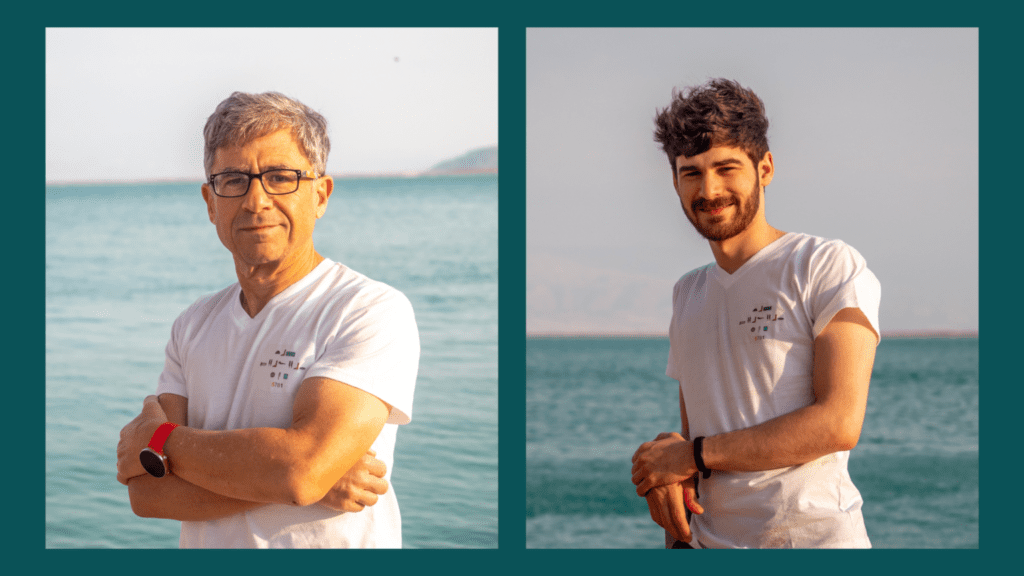
Jonathan Rabinowitz, PhD is the Elie Wiesel Professor at Bar Ilan University and a fellow of the American College Neuropsychopharmacology. His primary research focus Jonathan Rabinowitz – Google Scholar is on improving safety and efficiency of clinical trials. His goal in this project is to improve people’s lives by increasing the amount of physical activity in their life thru this small tweak in existing technology and their daily routine.
Alon Rabinowitz, is studying software engineering at Shenkar College of Engineering and Design. He has a passionate interest in sustainability and conservation.After a long stretch of limited mobility due to illness, armed with his smartphone loaded with transportation apps, my son, Alon, navigated his commute. Over time he became able to comfortably walk increased distances. Walking improved his total wellbeing. He discovered that if he strategically took busses with stops further away, he could arrive at his destination earlier and gain a vital walk. To his dismay, the apps did not allow him to set walking distances, only to choose to limit them (below are the screens of the two leading apps that he used).
As my son discovered, commuting and transportation apps allow the user to do “less walking”; imagine if transportation apps allowed people to do “more walking”? Like my son, many people would be able to get to places faster and be more physically active.
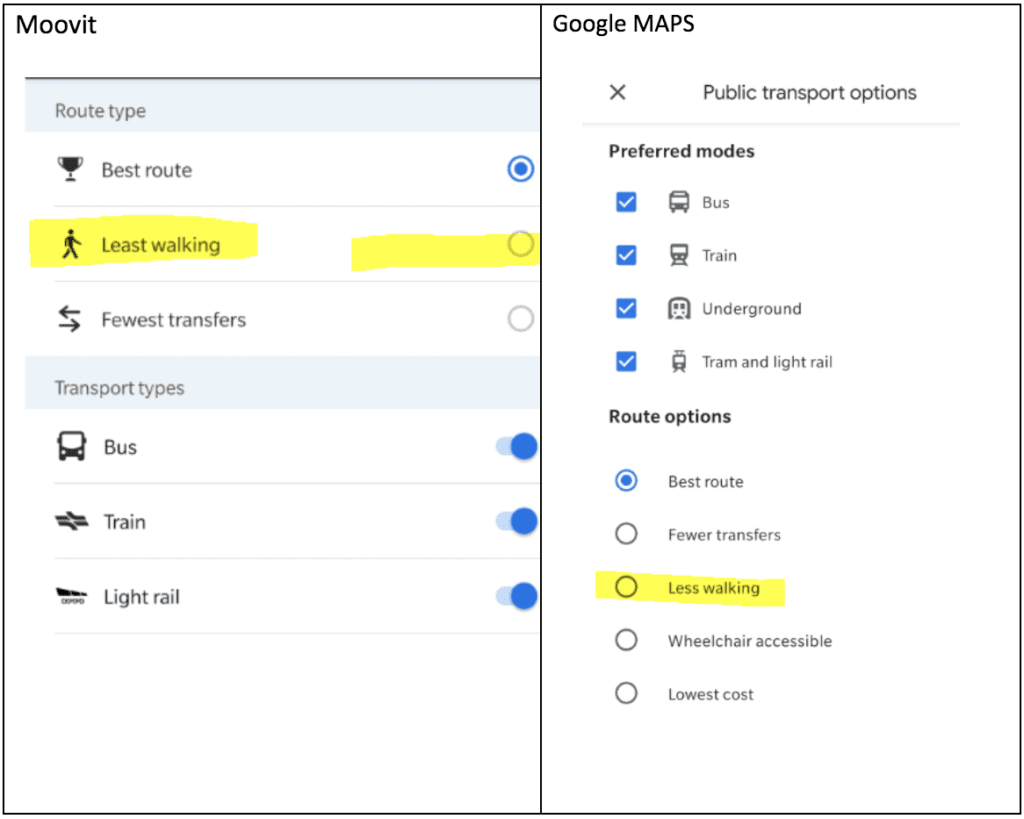
The apps have a built-in set amount—not disclosed– they feel is reasonable for the average person to walk and plan the route accordingly. Busses and trains within this limit are shown, those beyond are not.
The user can choose to walk less than this, but not to walk more. The user is anchored to the fixed setting in the app. However, if the app allowed the user to indicate how far they are willing to walk, it would open-up additional options like a more direct bus or train that could be faster. Unfortunately, the apps do not currently allow the user to set how far they are willing to walk or to set physical activity goals.
Inspired by son’s journey, I am looking for other like-minded individuals to join in a global campaign to better integrate walking and physical activity in transportation apps.
For some deeper examination of this issue, here are 3 routes shown in google maps using default settings:
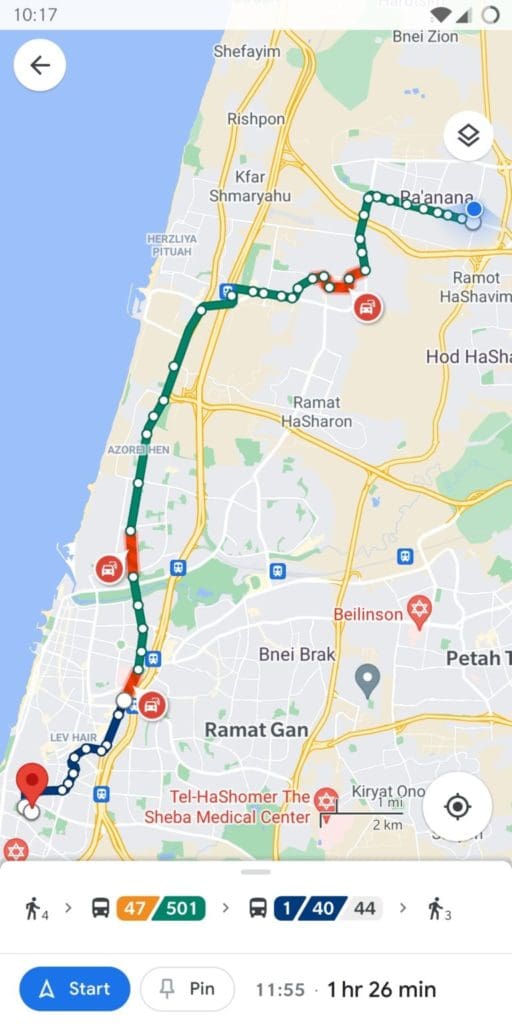
(1) Complete route door to door on bus. As seen 4 minutes walking to the bus stop from home and taking either line 47 or 501 bus and then transferring to either the 1, 40 or 44 lines and then walking 3 minutes to destination.
This route takes 1 hour and 26 minutes assuming all the busses arrive exactly on-time, so generally takes about 1 hour and 40 minutes.
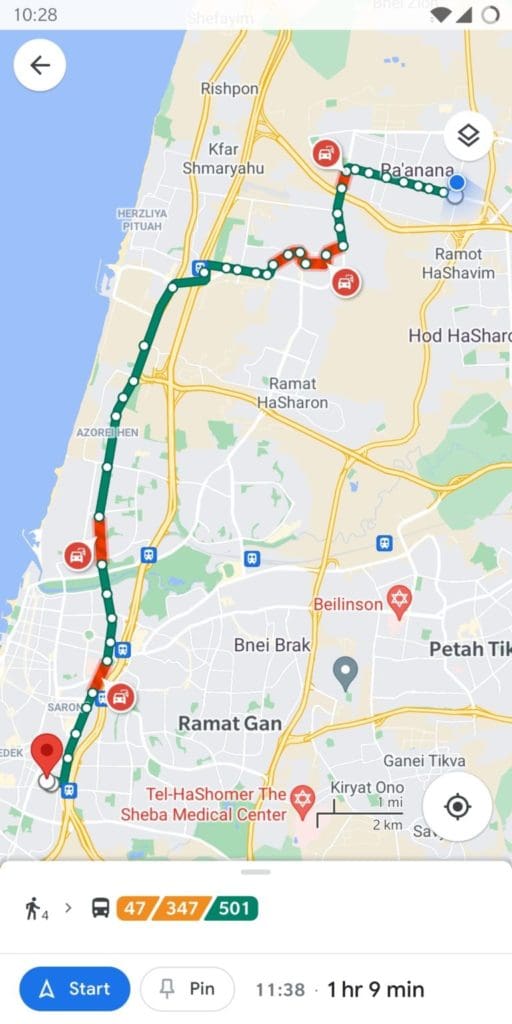
(2) Getting off the bus at a different stop. This stop is accessible from 3 instead of 2 bus lines.
Using this route my son did not need to transfer lines or wait for second bus. He travelled by bus 1 hr 9 minutes on one bus, and gained a 2 k (1.2 mile walk) which google maps estimates takes 26 minutes, but most of the time Alon did it in 20 minutes.
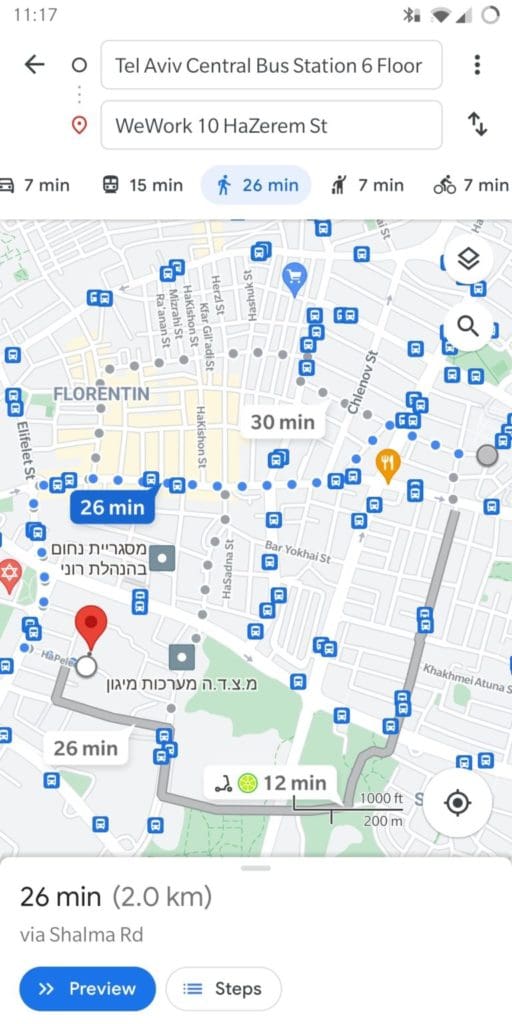
(3) Replacing transfer busses (1,40 or 44) with walk (2 k, 1.2 mile walk).
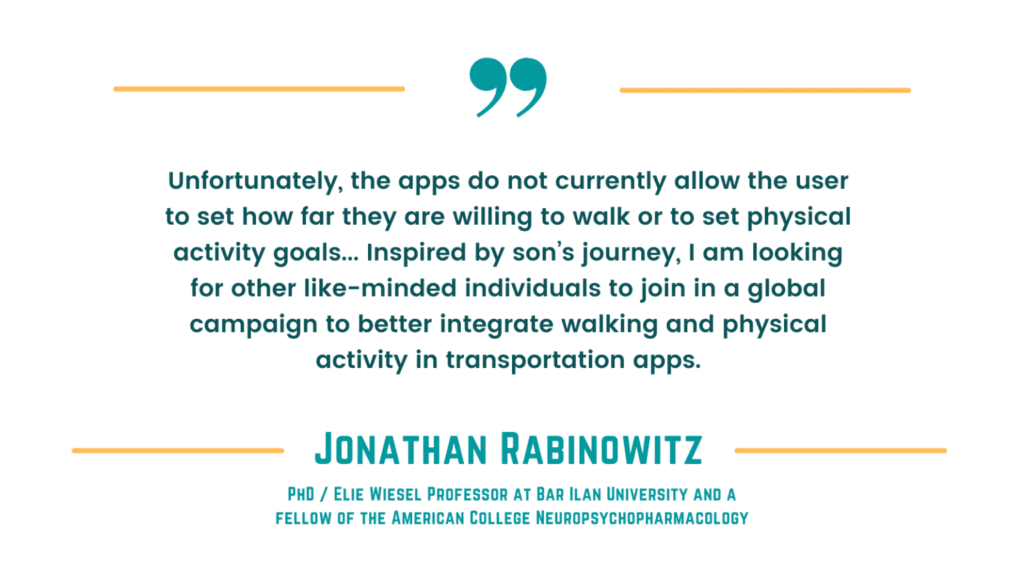
Beyond the incremental change to the existing apps, allowing the user to increase the amount of walking default, we envision as a next stage expanding transportation apps capabilities to be able to accommodate even greater planned walking and active transportation with the following customized nuances like in this example:
Rhonda spends an hour a day commuting to work. She is struggling to make time for physical activity. Rhonda sets a goal of walking 10 miles a week. She defines her 4 anticipated commuting times and destinations. She works Monday to Friday. The app arranges a transportation model so that she hits her walking target of 10 miles during the week.
It optimizes transportation route, while taking into account weather conditions (e.g., if rain is forecast for the afternoon incorporates walk in the morning commute). For example, on Monday morning since it is expected to rain in the afternoon, Rhonda is directed to take the 32 bus that comes at 8:15 which has a stop 2 miles away, further away than the bus stop closer to her home. It also gives her the walking route to that bus and from that bus to work. On Tuesday, since she indicated a preference to walk in the neighborhood near where she works, Rhonda is directed to take an express bus next to her home that has a stop 1 mile from her place of work, and to also take that bus home from work.
Once we can get the existing apps to add in a “More Walking” setting, I envision doing a before after study comparing walking behavior after users are able to switch to “more walking” on existing apps. I also am working on a survey to assess commuters interest in using such technology to get more physical activity in a forthcoming survey of the Department of Transportation here in Israel where I live.